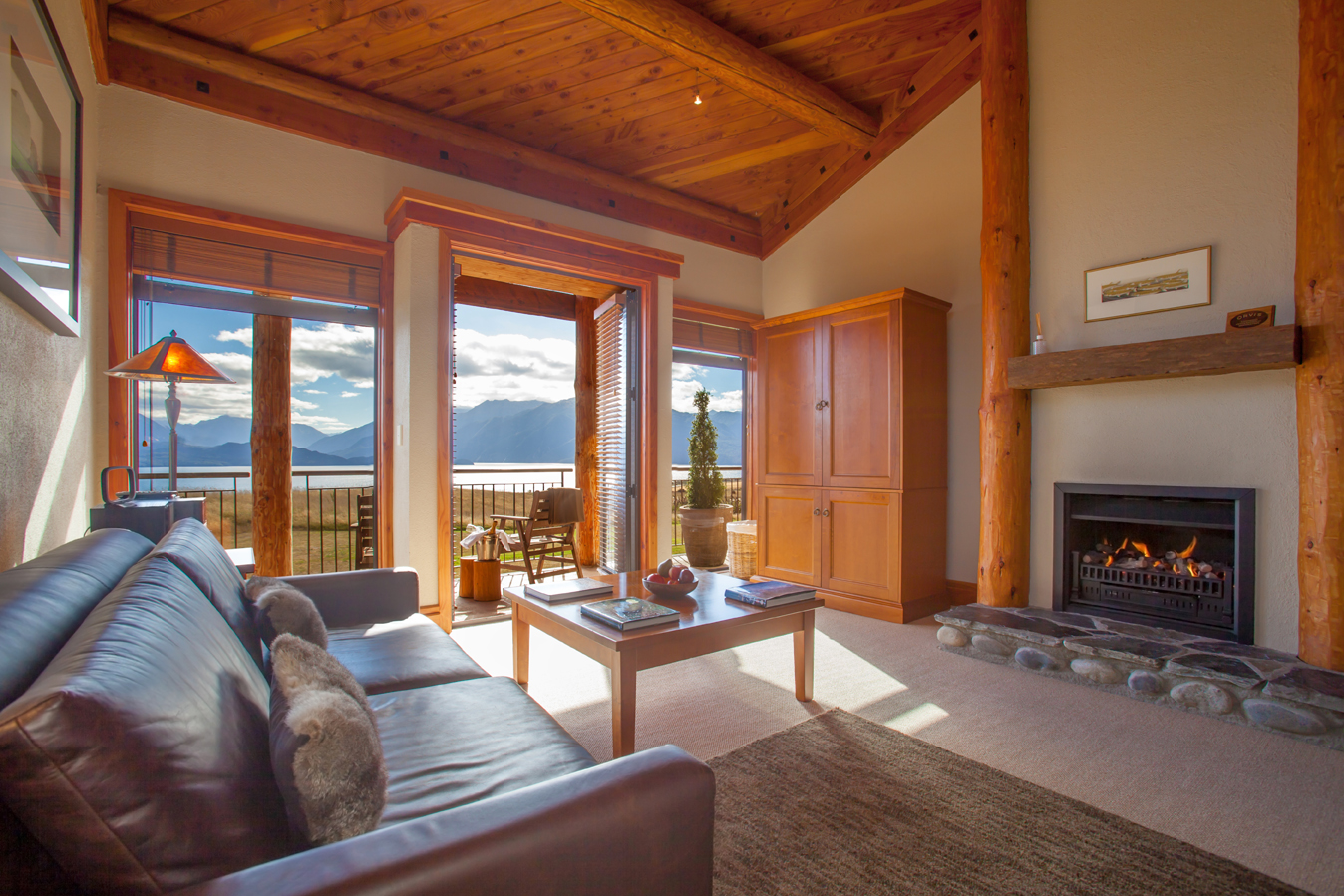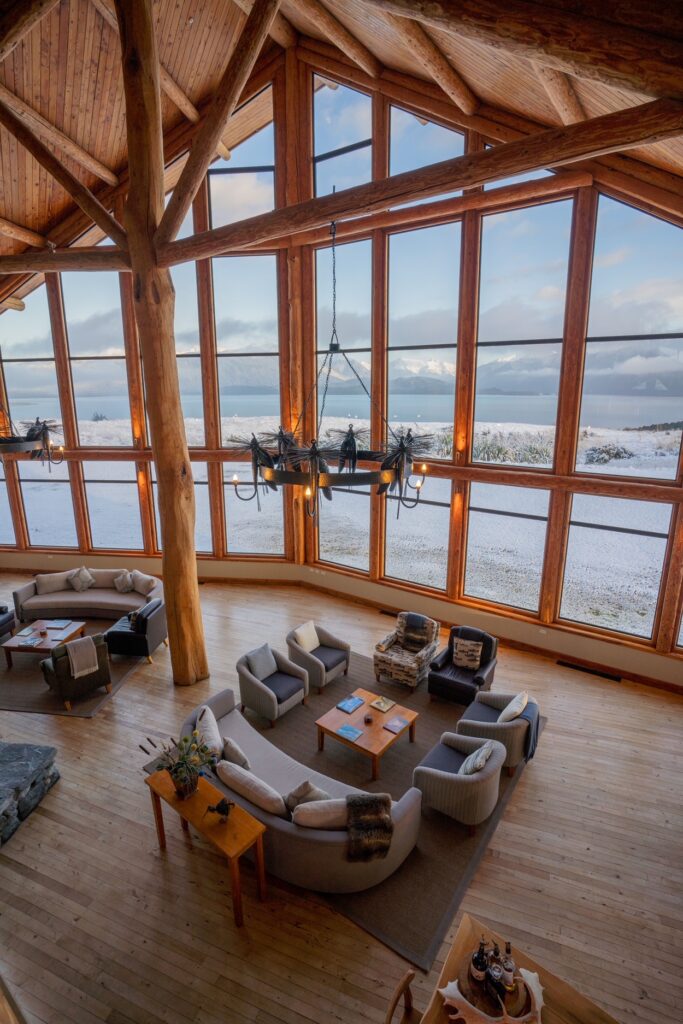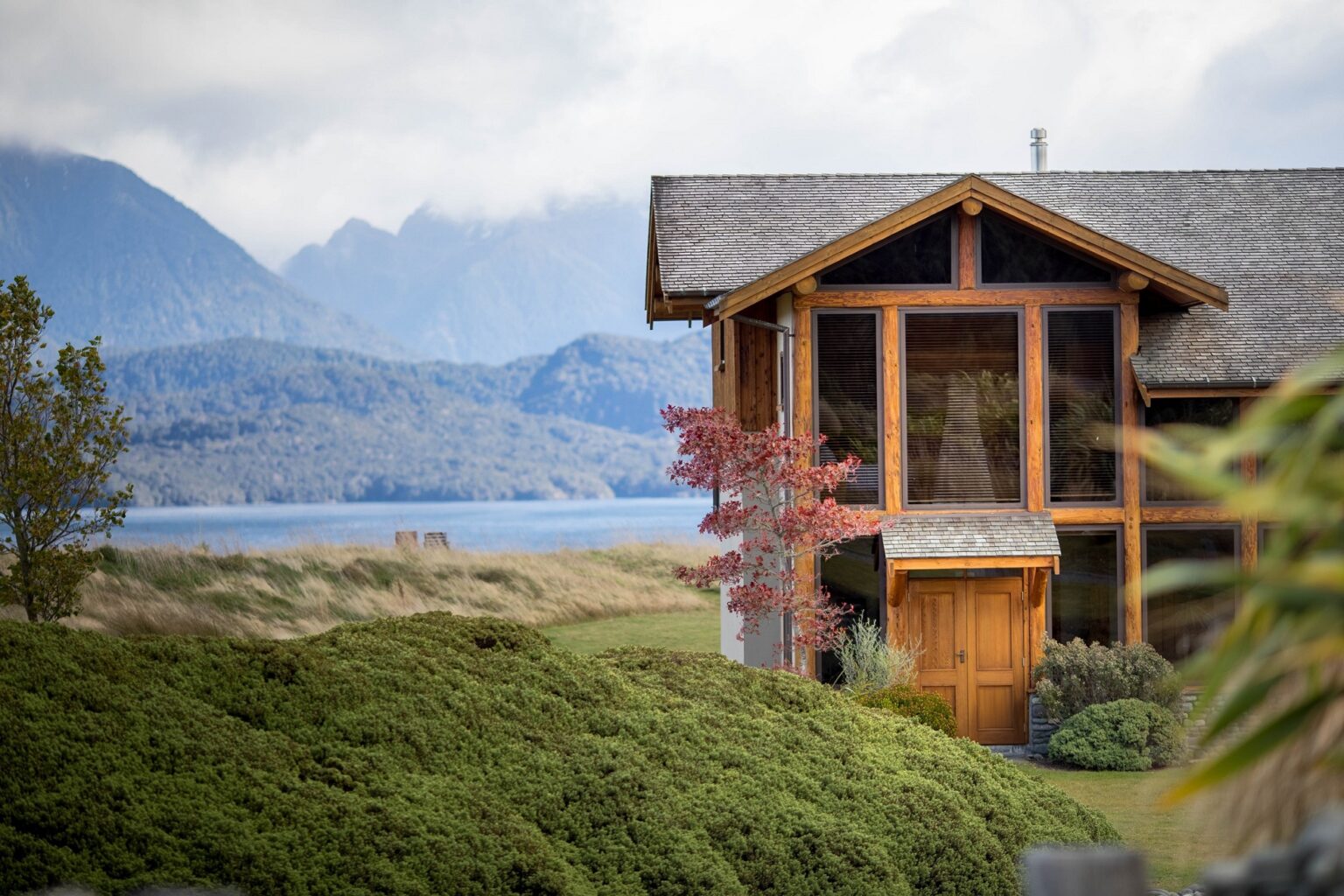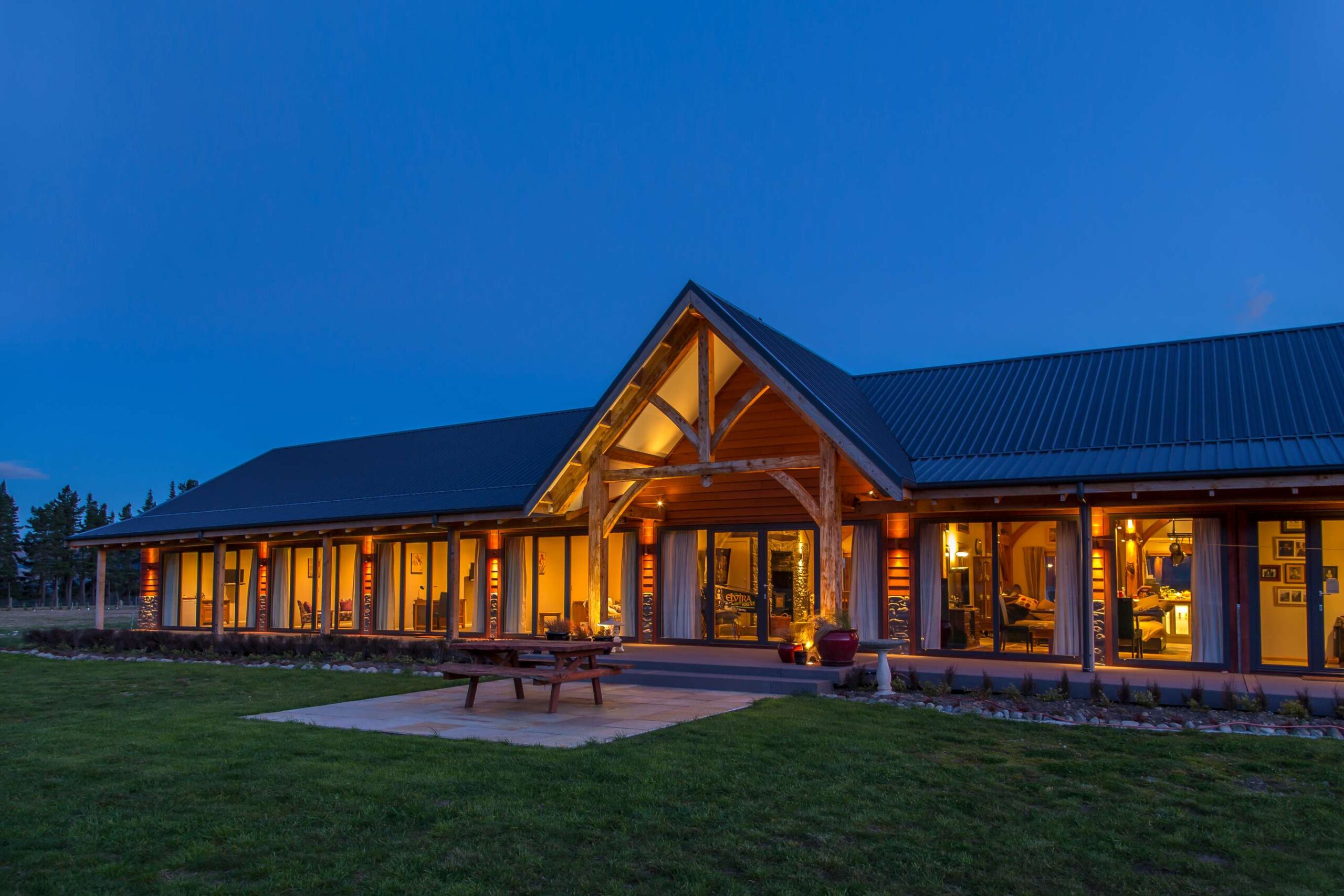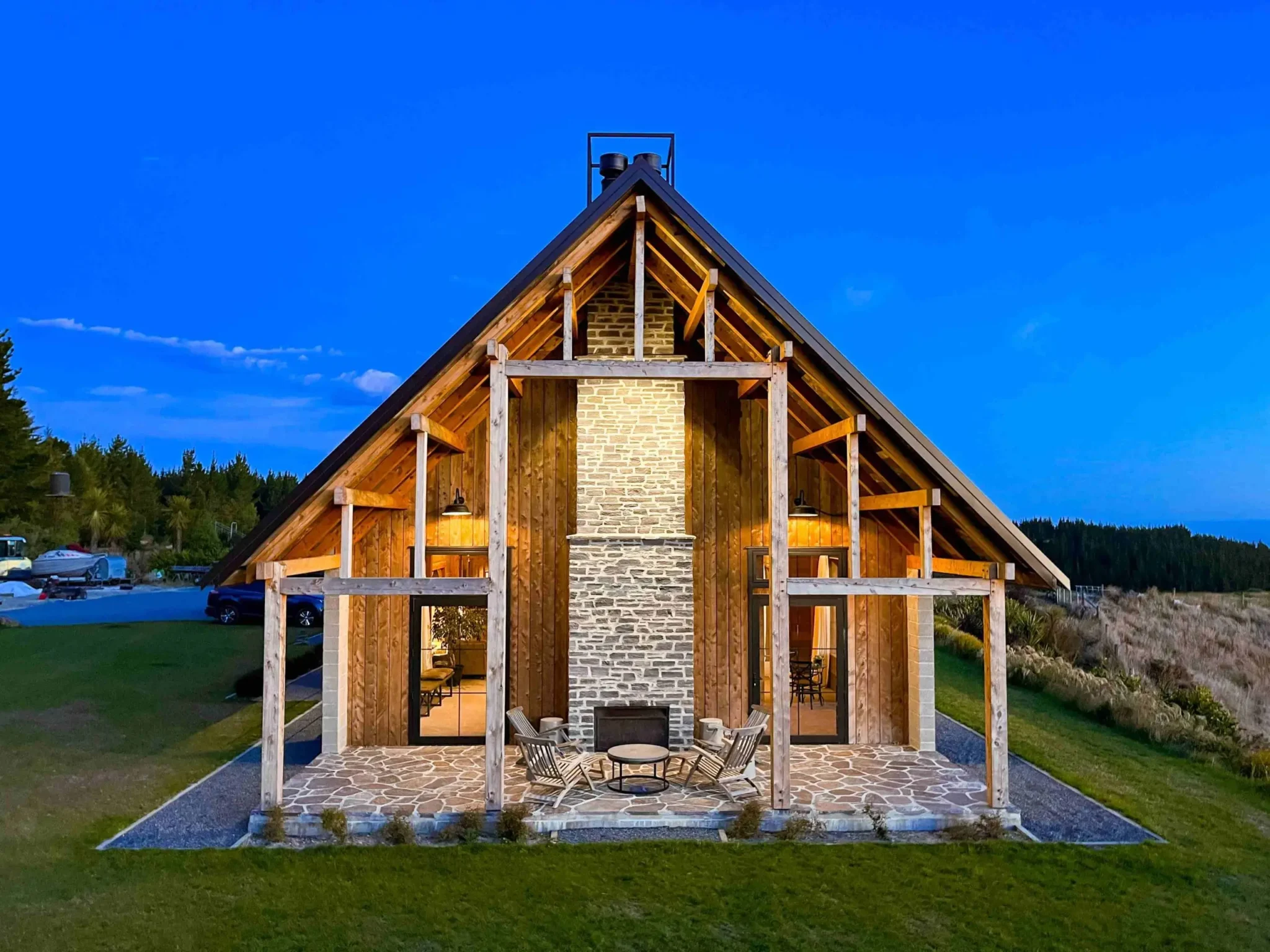AN INTRODUCTION TO NEW ZEALAND GROWN DOUGLAS-FIR
Great homes tend to start with a clear intention. A clear purpose and objective; why am I doing this? What do I want to achieve – not just structurally, but personally?
Whether you are building for a good time, or building for a long time. If you’ve chosen to build with timber, there are timbers suited to both. One of our preferred timbers, the topic of this article, is locally grown Douglas-fir.
Photos on this page are of the Fiordland Lodge in Te Anau whose owners chose Douglas-fir as one of their main building materials after staying in similar lodges in Alaska. Besides having the ‘wow’ factor and aesthetic qualities they were after, their builder recommended it for practical reasons – in particular its durability, and stability. We weren’t involved in the Fiordland Lodge in any way but really admire the design and construction – what a beauty!
Douglas-fir originates from the Pacific Northwest of the U.S. and Canada. It’s one of the world’s most important and valuable trees, prized both for its ecological role and as a renewable building material known for its immense strength. Mature Douglas-fir can live for over 1,500 years and comfortably reach heights of 100 metres along the coast of British Columbia, Canada. It was introduced to New Zealand in 1859 with large-scale planting from around 1900, so by the time those plantings were ready for harvest in the 1930s and 1940s, it started to alleviate some of the stress being put on our precious Kauri and Rimu trees, which unfortunately had been hit hard by the antiquated logging practices of the time. Douglas-fir accounts for around 5% of New Zealand’s total plantation area today so it’s still quite niche.
Notably strong and durable, Douglas-fir is most commonly used for structural and engineering purposes. Harvestable within 35-40 years, it’s also a hard-working contributor to our climate goals: Douglas-fir can store an average of 200 tonnes of carbon per hectare at 40 years of age (Scion).
Untreated Douglas-fir for indoor air quality
If you’ve ever spent time in a home built with untreated timber, you’ll know the feeling – the smell and atmosphere are unmistakably calm and soothing. In the case of Douglas-fir, these sensations come with an added benefit: it has the lowest formaldehyde and Volatile Organic Compounds (VOCs) emissions of all the major building timbers when air-dried.
Formaldehyde is typically associated with manufactured products, but it occurs naturally in timber too – and it’s a serious toxin when inhaled in significant amounts. That’s why strict regulations exist to limit formaldehyde emissions in indoor environments.
Untreated Douglas-fir offers one of the most natural and safe timber experiences available. It doesn’t require chemical treatment for most interior applications and emits less than 15% of the vapours permitted under building codes. As carpenters, that’s one of the many reasons we love working with it – we know we are safe to breathe without wearing face masks, it’s safe to handle without gloves or goggles and off-cuts can be safely burned. Plus we don’t even need to wash our work clothes separately!
For anyone with sensitive lungs or a focus on health-conscious building materials, untreated Douglas-fir is well worth considering.
We started this article by noting that great homes tend to start with a well-considered purpose. And nestled among the rich history of Douglas-fir in New Zealand we have encountered some terrific custodians of the land and forests, who’ve shown a lot of foresight and purpose over the years to understand the long-term payoffs of investing in premium timber like Douglas-fir. As well as New Zealand’s various forestry research groups investigating ways timber’s potential can be better utilised for warmer, healthier homes, along with global issues like carbon sequestration and sustainable building.
Close to our farm at Mohaka River (near Napier) we have several exceptional Douglas-fir plantations. We make regular visits to each where we sight and fell the best available trees for our projects. If you happen to be near Napier and you are interested in forestry, or just want a relaxing walk among 500 species of native and imported trees (!), we’d well recommend a stop in at Holt Forest near Lake Tūtira. This is a neat local attraction where anyone can experience the wonder of the forest up close.
Further reading
BioResources (2013). Understanding of Formaldehyde Emissions from Solid Wood: An Overview. Link
New Zealand Douglas-fir. Link
Polymers (2020). Volatile Organic Compounds (VOCs) from Wood and Wood-Based Panels: Methods for Evaluation, Potential Health Risks, and Mitigation. Link
SCION. Douglas-fir. Link
Taranaki Regional Council. Douglas-fir. Sustainable Land Management Programme. Link
United States Environmental Protection Agency (n.d.). Volatile Organic Compounds’ Impact on Indoor Air Quality. Link
World Health Organization (2010). WHO Guidelines for Indoor Air Quality: Selected Pollutants. [Formaldehyde]. Link

